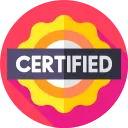FREE
daily Instructor: Dr. Amanda GrahamAbout this Course
Mastering Wikipedia's Core Principles and Policies
Understanding Wikipedia's Fundamental Pillars
- Deep dive into the five pillars of Wikipedia: the encyclopedia definition, a neutral point of view, free content, respect and civility, and no firm rules. This involves a complete understanding of how these pillars interact and influence content creation and editing decisions.
- Analyzing how these pillars shape the editorial process, from initial article creation to dispute resolution. Focus on practical application and hypothetical scenarios where these principles are tested.
- Examining the historical context of these pillars and how they've evolved since Wikipedia's inception. Understanding the underlying rationale for each pillar's inclusion and continued importance.
Navigating Wikipedia's Core Content Policies
- In-depth analysis of Wikipedia's core content policies: Neutral Point of View (NPOV), Verifiability (V), and No Original Research (NOR). This involves dissecting each policy's nuances and exceptions.
- Practical exercises in applying NPOV to controversial topics, including identifying and mitigating bias in source material and editorial decisions.
- Detailed study of Verifiability, focusing on acceptable source types, proper citation techniques, and understanding the 'burden of evidence'.
- Comprehensive examination of No Original Research, covering synthesis of published material, identifying impermissible conclusions, and avoiding personal interpretations.
Creating High-Quality Wikipedia Articles
Conducting Thorough Topic Research and Evaluation
- Mastering advanced research techniques for identifying reliable sources. Including utilizing academic databases, reputable news archives, and subject-specific resources.
- Developing critical evaluation skills for assessing source credibility, including identifying potential bias, evaluating author expertise, and analyzing publication reputation.
- Strategies for determining notability according to Wikipedia's specific guidelines. Including analyzing source coverage, assessing impact, and understanding the nuances of general and subject-specific notability criteria.
Structuring and Writing Clear, Concise, and Neutral Content
- Developing effective outlining strategies for organizing complex topics into logical and coherent sections. Including using hierarchical structures, creating informative headings, and ensuring smooth transitions.
- Mastering Wikipedia's Manual of Style (MOS) for writing clear, concise, and accessible prose. This includes understanding grammar, punctuation, tone, and formatting guidelines.
- Techniques for writing from a neutral point of view (NPOV), including avoiding loaded language, presenting multiple perspectives fairly, and attributing opinions to reliable sources.
Formatting Articles for Readability and Accessibility
- Implementing proper formatting techniques for headings, lists, tables, and images. Including understanding accessibility guidelines for users with disabilities.
- Utilizing internal and external links to enhance article context and navigation. Including strategic link placement and avoiding overlinking.
- Mastering the use of infoboxes and other templates to present key information in a concise and visually appealing manner.
Optimizing Wikipedia Articles for Visibility and Impact
Understanding Wikipedia's Search Engine Optimization (SEO) Principles
- Analyzing how Wikipedia's search algorithm ranks articles based on relevance, quality, and user engagement.
- Identifying keywords and phrases that users are likely to search for when looking for information on a specific topic.
- Strategies for incorporating keywords naturally into article titles, headings, and content.
Leveraging Internal Linking and Category Systems
- Developing effective internal linking strategies to connect related articles and improve navigation within Wikipedia.
- Understanding Wikipedia's category system and how to properly categorize articles for optimal visibility.
- Creating and utilizing disambiguation pages to resolve ambiguity and ensure users find the correct article.
Monitoring Article Performance and Making Data-Driven Improvements
- Utilizing Wikipedia's page view statistics and other analytical tools to track article performance.
- Analyzing user behavior to identify areas for improvement, such as content gaps, confusing language, or poor formatting.
- Implementing A/B testing to evaluate the effectiveness of different content and formatting choices.
Navigating the Wikipedia Community and Editorial Processes
Understanding Wikipedia's Community Structure and Culture
- Understanding the roles and responsibilities of different user groups, including administrators, editors, and bots.
- Learning about Wikipedia's consensus-building process and how to effectively participate in discussions and debates.
- Developing strategies for building positive relationships with other editors and resolving conflicts constructively.
Effectively Participating in Discussions and Dispute Resolution
- Mastering Wikipedia's talk page system for discussing article content and related issues.
- Understanding the different methods of dispute resolution, including mediation, arbitration, and request for comment (RfC).
- Techniques for presenting arguments clearly and persuasively, while remaining respectful and civil.
Understanding and Adhering to Wikipedia's Conflict of Interest (COI) Guidelines
- Identifying and disclosing potential conflicts of interest when editing Wikipedia articles.
- Understanding the restrictions and limitations that apply to editors with a COI.
- Strategies for contributing to Wikipedia in a neutral and ethical manner, even when having a COI.
Course Features
Honorary Certification
Receive a certificate before completing the course.
Expert Instructor
Get live study sessions from experts
Study Schedule
Plan your learning and get notified when it's time.
Multilingual Support
Learn and take exams in your native language
Pricing Plans
Currency
Sign in to change your currency
I'm not ready to enroll?
Tell us what’s stopping you, because it matters.
External Resources
Discussion Forum
Join the discussion!
No comments yet. Sign in to share your thoughts and connect with fellow learners.
Frequently Asked Questions
For detailed information about our Wikipedia: Article Creation, Content Optimization, and Visibility Guidelines Certification course, including what you’ll learn and course objectives, please visit the "About This Course" section on this page.
The course is online, but you can select Networking Events at enrollment to meet people in person. This feature may not always be available.
We don’t have a physical office because the course is fully online. However, we partner with training providers worldwide to offer in-person sessions. You can arrange this by contacting us first and selecting features like Networking Events or Expert Instructors when enrolling.
Contact us to arrange one.
This course is accredited by Govur University, and we also offer accreditation to organizations and businesses through Govur Accreditation. For more information, visit our Accreditation Page.
Dr. Amanda Graham is the official representative for the Wikipedia: Article Creation, Content Optimization, and Visibility Guidelines Certification course and is responsible for reviewing and scoring exam submissions. If you'd like guidance from a live instructor, you can select that option during enrollment.
The course doesn't have a fixed duration. It has 28 questions, and each question takes about 5 to 30 minutes to answer. You’ll receive your certificate once you’ve successfully answered most of the questions. Learn more here.
The course is always available, so you can start at any time that works for you!
We partner with various organizations to curate and select the best networking events, webinars, and instructor Q&A sessions throughout the year. You’ll receive more information about these opportunities when you enroll. This feature may not always be available.
You will receive a Certificate of Excellence when you score 75% or higher in the course, showing that you have learned about the course.
An Honorary Certificate allows you to receive a Certificate of Commitment right after enrolling, even if you haven’t finished the course. It’s ideal for busy professionals who need certification quickly but plan to complete the course later.
The price is based on your enrollment duration and selected features. Discounts increase with more days and features. You can also choose from plans for bundled options.
Choose a duration that fits your schedule. You can enroll for up to 6 days at a time.
No, you won't. Once you earn your certificate, you retain access to it and the completed exercises for life, even after your subscription expires. However, to take new exercises, you'll need to re-enroll if your subscription has run out.
To verify a certificate, visit the Verify Certificate page on our website and enter the 12-digit certificate ID. You can then confirm the authenticity of the certificate and review details such as the enrollment date, completed exercises, and their corresponding levels and scores.
Can't find answers to your questions?
How to Get Certified

Complete the Course
Begin the course by selecting your experience level in the course content section:
Beginner: Master the material with interactive questions and enough time.
Intermediate: Get certified faster with hints and balanced questions.
Advanced: Challenge yourself with more questions and less time

Earn Your Certificate
To download and share your certificate, you must achieve a combined score of at least 75% on all questions answered.






